Tag: 1392
21 August 1940 – today in history…
by Volker on Aug.21, 2025, under Allgemein
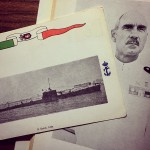 Gulf of Bomba (Lybia). In August 1940, the time had finally come to put the new SLC weapon to the test. Alexandria in the eastern Mediterranean was the main base of the British Mediterranean fleet. The battleships at anchor there were the first targets for missions of the Mezzi d’Assalto involving the SLCs.
Gulf of Bomba (Lybia). In August 1940, the time had finally come to put the new SLC weapon to the test. Alexandria in the eastern Mediterranean was the main base of the British Mediterranean fleet. The battleships at anchor there were the first targets for missions of the Mezzi d’Assalto involving the SLCs.
The transport submersible Iride, under the command of Tenente di Vascello Francesco Brunetti, prepared for its tour of duty with the SLCs on 21 August 1940, ready to attack the Port of Alexandria in the night of 25/26 August 1940. Eleven servicemen with four SLCs aboard the torpedo boat Calipso were dispatched to the Gulf of Bomba on the Libyan coast. There, the SLCs were tested at held ready for departure until they were ready to launch mission G.A.1 a few days later with the submersible Iride.
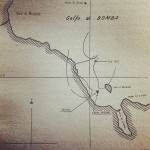 Right at the start of its test run, however, the submersible Iride was spotted by three Fairey Swordfish torpedo bombers, which had launched from the aircraft carrier HMS Eagle. The enemy bombers began their attack straight away (see historic map on the left).
Right at the start of its test run, however, the submersible Iride was spotted by three Fairey Swordfish torpedo bombers, which had launched from the aircraft carrier HMS Eagle. The enemy bombers began their attack straight away (see historic map on the left).
The shallow water in the Gulf of Bomba prevented the Iride from descending quickly. Instead, it attempted to ward off the attack at full speed with its anti-aircraft cannons. At the same time, Brunetti tried in vain to direct the bow of the submersible towards the attackers in order to reduce the area of the Iride exposed to attack. However, the Iride was soon hit by a torpedo and sank. The boats quickly dispatched to the scene managed to rescue some of the shipwrecked crew members from the Iride. A dramatic race against time began.
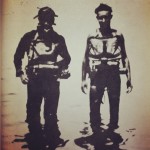 The SLC teams under Gino Birindelli (right in the photo), Teseo Tesei, Elios Toschi, Luigi Durand de la Penne and Emilio Bianchi dived straight down to the wreck of the Iride in order to save the survivors who were trapped down there. Although the equipment belonging to the SLC pilots on board the Iride was lost, but the three SLCs were recovered for use in later missions. The SLCs pilots returned to the Bocca di Serchio on board the Calipso.
The SLC teams under Gino Birindelli (right in the photo), Teseo Tesei, Elios Toschi, Luigi Durand de la Penne and Emilio Bianchi dived straight down to the wreck of the Iride in order to save the survivors who were trapped down there. Although the equipment belonging to the SLC pilots on board the Iride was lost, but the three SLCs were recovered for use in later missions. The SLCs pilots returned to the Bocca di Serchio on board the Calipso.
During the rescue of the survivors from the Iride, they had pushed themselves to the very limit of what was humanly possible. Loss of human life and equipment was the sobering result of the first mission „Operazione G.A.1“ with the new weapon of the Mezzi d’Assalto.
Read more on Gino Birindelli, one of the surviving SLC teams, in chapter VIII.II on page 1014-1043 or click also here. More information on the historic content in our “The References” book set can be found here. Read about the featured watches from Guido Panerai & Figlio in the first and second volume here.
A look into our book “The References” 1950’s-1960’s
by Volker on May.17, 2025, under Allgemein
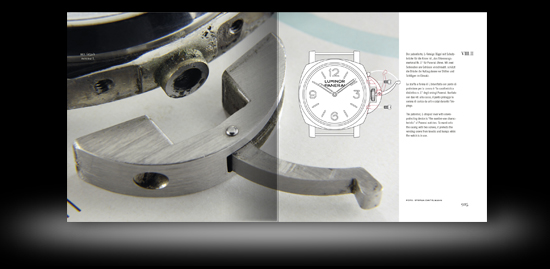
Page 924-925 – the patented, L-shaped lever with crown-protecting device of a Ref. 6152/1.
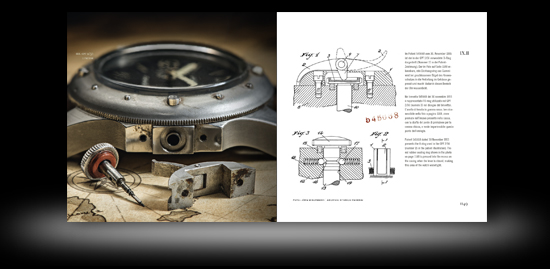
Page 1148-1149 – patent 545668 (dated 30 November 1955) presents the O-ring used in the GPF 2/56.
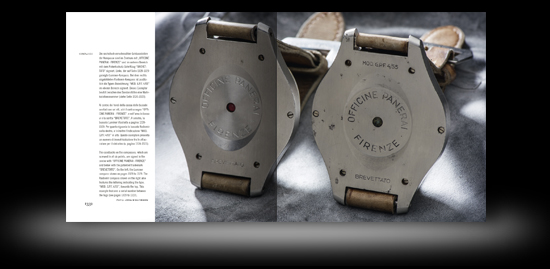
Page 1332-1333 – the casebacks on the compasses, which are screwed in at six points, ar signed in the center with „OFFICINE PANERAI – FIRENZE“ and below with the patented trademark „BREVETTATO“. The Radiomir compass on the right also features the „MOD. G.PF. 4/55“.
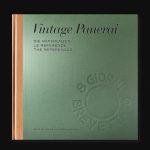 “The References” 1950’s-1960’s at a glance:
“The References” 1950’s-1960’s at a glance:
37 Vintage Panerai watches from the 1950’s to 1960’s. Featured References: 6152, 6154, 6152/1, GPF 2/56 and modified References, compasses and depth gauges followed by an overview of the straps and buckles used in this era.
26 x 26 cm, 696 pages, trilingual (German, Italian and English language in one book), 27 database charts, 353 illustrations, including rare historic photos from Italian and Egyptian frogmen, hardback jacket, slipcase.
Visit our bookstore and enjoy reading soon!
Restart after the end of the Second World War
by Volker on May.09, 2025, under Allgemein
What brought about the demand for new and improved diver’s watches in Italy after the end of the Second World War? The answer to this question is inextricably intertwined with the history of the maritime special units, whose transformation from the Mezzi d’Assalto of the Decima MAS to the COMSUBIN took many years.
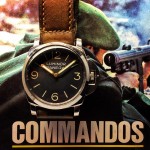 From 1947 to 1951, various divisions and bases were established, restructured and merged, finally settling on COMSUBIN (Comando Subacquei ed Incursori) in 1961. Varignano near La Spezia, headquarters of the COMSUBIN and, as of 1952, was and still is the base for the Scuola Incursori. One of the instructors in the 1950’s was Emilio Barberi M.O.V.M., shown on page 716 (MT explosive boat veteran of the mission against Souda Bay, March 1941, see also page 108-109 in chapter II.I). Read more in the intro of “The References” 1950’s-1960’s on page 705-719. These maritime special units were set up during the same period that Guido Panerai & Figlio was producing watches with the References 6152, 6154, 6152/1 and GPF 2/56, which are documented in chronological order in chapters VI to X. Compasses and depht gauges from these years are following in chapter XI, straps and buckles are closing this second volume of “The References” in chapter XII. Find an overview of all chapters in this book below:
From 1947 to 1951, various divisions and bases were established, restructured and merged, finally settling on COMSUBIN (Comando Subacquei ed Incursori) in 1961. Varignano near La Spezia, headquarters of the COMSUBIN and, as of 1952, was and still is the base for the Scuola Incursori. One of the instructors in the 1950’s was Emilio Barberi M.O.V.M., shown on page 716 (MT explosive boat veteran of the mission against Souda Bay, March 1941, see also page 108-109 in chapter II.I). Read more in the intro of “The References” 1950’s-1960’s on page 705-719. These maritime special units were set up during the same period that Guido Panerai & Figlio was producing watches with the References 6152, 6154, 6152/1 and GPF 2/56, which are documented in chronological order in chapters VI to X. Compasses and depht gauges from these years are following in chapter XI, straps and buckles are closing this second volume of “The References” in chapter XII. Find an overview of all chapters in this book below:
Chapter VI = Reference 6152
(featuring three different watches on page 720-781)
Chapter VII = Reference 6154
(featuring five different watches on page 782-867)
Chapter VIII = Reference 6152/1 with Rolex movements
(featuring fourteen different watches on page 868-1057)
Chapter IX = GPF 2/56
(featuring five different watches on page 1058-1161)
Chapter X = Modified References with Angelus movements
(featuring ten different watches on page 1162-1313)
Chapter XI = Compasses and depth gauges
(featuring fifteen different instruments on page 1314-1367)
Chapter XII = Straps and buckles
(various straps and pin buckles on page 1368-1387)
“The References” books are in stock and ready for shipping – just visit our bookstore and enjoy reading! [Ralf Ehlers & Volker Wiegmann]
Missions of the Egypt frogmen
by Volker on May.07, 2025, under Allgemein
 The Red Sea, the Straits of Tiran, the Gulf of Aqaba, even the shores of Dakar (Senegal) and Abidjan (Ivory Coast) – target zones of the Egypt frogmen during the Suez Crisis, the Six-Day War and the Yom Kippur War.
The Red Sea, the Straits of Tiran, the Gulf of Aqaba, even the shores of Dakar (Senegal) and Abidjan (Ivory Coast) – target zones of the Egypt frogmen during the Suez Crisis, the Six-Day War and the Yom Kippur War.
Not very much has been ever published before about missions against enemy ports, ships and oil platforms during the conflicts between Egypt and Israel. In the mid-50’s, both Egyptian and Israeli special forces attended separate training courses in Italy to learn the skills for underwater missions from their Italian instructors. After our search for historical documents and with the support of a high decorated Egypt frogmen veteran we were able to put a spotlight on some of the missions carried out decades ago.
Read the historical background on watches and instruments from Guido Panerai & Figlio used by the Egypt frogmen in chapter VII and IX of “The References” 1950’s-1960’s (second volume), accompanied with rare historic photos (page 794-795 shown in the coffee table shot above). The new “The References” books (two volumes with 696 pages each) can be ordered only in our bookstore. Enjoy reading!
“Luminor Panerai” Depth Gauge
by Volker on Apr.28, 2025, under Allgemein
 Compasses and depth gauges made by Guido Panerai & Figlio are featured in several versions (with “Radiomir” and “Luminor” luminous material) in chapter XI of the second volume of our book “The References”.
Compasses and depth gauges made by Guido Panerai & Figlio are featured in several versions (with “Radiomir” and “Luminor” luminous material) in chapter XI of the second volume of our book “The References”.
Chapter XI.I is featuring compasses from Guido Panerai & Figlio. Five different models are featured from page 1320 to 1333. Three with “Radiomir”, two with “Luminor”. Chapter XI.II is featuring depth gauges from Guido Panerai & Figlio, similiar to the instrument which can be seen in the photo. Ten different models are featured from page 1334 to 1367. Six with “Radiomir”, aimed to 7, 30, 35 (2 versions: adjustable and non-adjustable dial), 50 and 60 meters. Four with “Luminor”, aimed to 7, 15, 16, 30 and 40 meters.
Click on the link to see the video of a pressure test on a “Luminor Panerai” 16 meter depth gauge: Vintage_Panerai_Depth_Gauge. Click on the link to see the pressure release – “the surfacing” in this video: Vintage_Panerai_depth_gauge_surfacing
“Luminor Panerai” Compass
by Volker on Apr.22, 2025, under Allgemein
 Compasses and depth gauges made by Guido Panerai & Figlio are featured in several versions (with “Radiomir” and “Luminor” luminous material) in chapter XI of the second volume of our book “The References”.
Compasses and depth gauges made by Guido Panerai & Figlio are featured in several versions (with “Radiomir” and “Luminor” luminous material) in chapter XI of the second volume of our book “The References”.
Chapter XI.I is featuring compasses from Guido Panerai & Figlio. Five different models are featured from page 1320 to 1333. Three with “Radiomir”, two with “Luminor”, similiar to the instrument which can be seen in the photo.
Our book “The References” 1950’s-1960’s is featuring several historic photos in which such compasses from Guido Panerai & Figlio can be spotted on page 794, 1064, 1068, 1316, 1318.
Spot on: vintage straps and buckles
by Volker on Apr.15, 2025, under Allgemein
 In both volumes of our new book “The References” we dedicated one chapter for straps and buckles. Highly collectible and sought after straps and buckles dating back to the Second World War are featured in chapter V.
In both volumes of our new book “The References” we dedicated one chapter for straps and buckles. Highly collectible and sought after straps and buckles dating back to the Second World War are featured in chapter V.
The photo on the left shows two rare buckles from the Second World War era in different conditions. Because of their shape, these type of buckles were nicknamed “Bottle Opener” by collectors. Information on “The References” 1930’s-1940’s (first volume) can be found here.
 The famous GPF mod. Dep. buckles from the 1950’s-1960’s are featured in chapter XII, together with an overview of different straps made for Guido Panerai & Figlio watches and instruments.
The famous GPF mod. Dep. buckles from the 1950’s-1960’s are featured in chapter XII, together with an overview of different straps made for Guido Panerai & Figlio watches and instruments.
The photo on the left shows different buckles and straps. Information on “The References” 1950’s-1960’s (second volume) can be found here.
Our book “The References” is in stock (both volumes) and can be ordered in our bookstore. Learn how to order in our FAQ section.
Enjoy reading!
[Ralf Ehlers & Volker Wiegmann]
At a glance: The Reference 6152/1
by Volker on Mar.01, 2025, under Allgemein
 Watches of the Reference 6152/1 are featured in four of the twelve chapters of our book “The References” and are part of the second volume (1950’s-1960’s). The photo shows a 6152/1 with Rolex movement, “Luminor Panerai” dial and crown-protecting device (chapter VIII.II, page 942-955).
Watches of the Reference 6152/1 are featured in four of the twelve chapters of our book “The References” and are part of the second volume (1950’s-1960’s). The photo shows a 6152/1 with Rolex movement, “Luminor Panerai” dial and crown-protecting device (chapter VIII.II, page 942-955).
How do we explain four different versions in our book “The References” 1950’s-1960’s? Watches of the Reference 6152/1 are presented in order of the movement version, the type of winding crown used and sorted chronological by their casing reference number, as follows:
Chapter VIII.I = Reference 6152/1
with Rolex movement and 8 mm Rolex crown
(featuring four different watches on page 878-921).
Chapter VIII.II = Reference 6152/1
with Rolex movement and Panerai crown-protecting device
(featuring ten different watches on page 922-1057).
Chapter X.III = Modified Reference 6152/1
with Angelus movement and 8 mm Rolex crown
(featuring three different watches on page 1212-1259).
Chapter X.IV = Modified Reference 6152/1
with Angelus movement and Panerai crown-protecting device
(featuring four different watches on page 1260-1313).
Each of the four chapters shows the different movement and dial versions recorded in our database with charts, e.g. illustrating the relationship between registered watches with 8 mm Rolex crown and Panerai crown-protecting device of the Reference 6152/1. Additional information on different hands, caseback engravings for different forces which used the watches as well as historical background on two 6152/1 watches first owners can be found, too. Enjoy reading!
Our “The Reference” books are available in our bookstore.
A lot to read during the holiday season…
by Volker on Nov.10, 2024, under Allgemein
 Read about watches and instruments from Guido Panerai & Figlio. Vintage Panerai watches from the 1930’s to the 1960’s are described and photographed in intricate detail for the reader, telling the stories of their first users during their dangerous underwater missions.
Read about watches and instruments from Guido Panerai & Figlio. Vintage Panerai watches from the 1930’s to the 1960’s are described and photographed in intricate detail for the reader, telling the stories of their first users during their dangerous underwater missions.
“History1” (420 pages)
“History2” (480 pages)
“The References” 1930’s-1940’s (696 pages)
“The References” 1950’s-1960’s (696 pages)
As a reference finder, as an addition to your library at home or as a special christmas gift for your friends: our Vintage Panerai books will be a great read for any Panerai collector. Each book comes with an embossed hardback jacket (leather and canvas) in a slipcase, sized 10.2 x 10.2″, trilingual (= German, Italian and English language).
Our four books are in stock and can be shipped immediately – just visit our bookstore. Use the browse by tags function to get further information about the content in each of the four books. Read how to place your order here.
Take your seat and enjoy reading!
[Ralf Ehlers & Volker Wiegmann]
30 October 1940 – today in history…
by Volker on Oct.30, 2024, under Allgemein
1940. The first mission against the Port of Gibraltar (B.G.1) was aborted when it became clear that the British fleet had already left for Operation “Menace”. The transport submersible Scirè under the command of Junio Valerio Borghese was still 50 nautical miles off Gibraltar. Disappointed, the SLC teams returned to their secret base at Bocca di Serchio, where they intensively discussed the feasibility of this type of attack. This happened at the same time when „Operazione G.A.2“ was about to end with the sinking of the transport submersible Gondar.
 Initial, decisive proof of the feasibility and the successful, secret penetration of enemy ports was achieved by Comandante Borghese and his men in mission B.G.2. Again, three SLCs were dispatched: Teseo Tesei with Alcide Pedretti, Luigi Durand de la Penne with Emilio Bianchi and Gino Birindelli with Damos Paccagnini.
Initial, decisive proof of the feasibility and the successful, secret penetration of enemy ports was achieved by Comandante Borghese and his men in mission B.G.2. Again, three SLCs were dispatched: Teseo Tesei with Alcide Pedretti, Luigi Durand de la Penne with Emilio Bianchi and Gino Birindelli with Damos Paccagnini.
The Scirè came into position at around 1.30 a.m. on 30 October 1940 in order to allow the SLC teams to disembark from the conning tower of the submersible. The Scirè only remained at the surface for a short time so that the three SLC teams could reach the cylindrical pods on the deck of the submersible. The Scirè then retreated back beneath the surface. Under water, the three teams manoeuvred their SLCs out from the pods and started their attack on the Port of Gibraltar. The three teams experienced problems almost as soon as the attack began. While Tesei and his co-pilot Pedretti had problems with their breathing apparatus, Durand de la Penne and his co-pilot Bianchi experienced problems with their electric engine. Both teams decided to abort the attack and sink their SLCs. However, only De la Penne managed to do this. Tesei’s SLC was washed up on the Spanish coast near La Linea and caused quite a stir among both the Spanish authorities and the British secret service. Both teams swam to the Spanish coast and were able to return safely to Italy with the help of the Italian secret service.
 The fate of the entire operation now lay in the hands of Gino Birindelli and his co-pilot Damos Paccagnini. Unaware of the fact that their comrades-in-arms had already had to terminate their mission, they launched their attack on the Port of Gibraltar. Although mission B.G.2 was in principle a failure because not one enemy ship was sunk, Birindelli and his co-pilot Paccagnini were able to prove for the first time that a “maiale” was able to enter an enemy port unnoticed.
The fate of the entire operation now lay in the hands of Gino Birindelli and his co-pilot Damos Paccagnini. Unaware of the fact that their comrades-in-arms had already had to terminate their mission, they launched their attack on the Port of Gibraltar. Although mission B.G.2 was in principle a failure because not one enemy ship was sunk, Birindelli and his co-pilot Paccagnini were able to prove for the first time that a “maiale” was able to enter an enemy port unnoticed.
„Operazione B.G.2“ marked the start of a three year war that took place noiselessly and under water in the Bay of Gibraltar. For Gino Birindelli, however, the mission marked the start of a journey through Allied POW camps that would last many months. Read more on mission B.G.2 and the story of Gino Birindelli in our book “The References” 1950’s-1960’s in chapter VIII.II on page 1014-1043.





